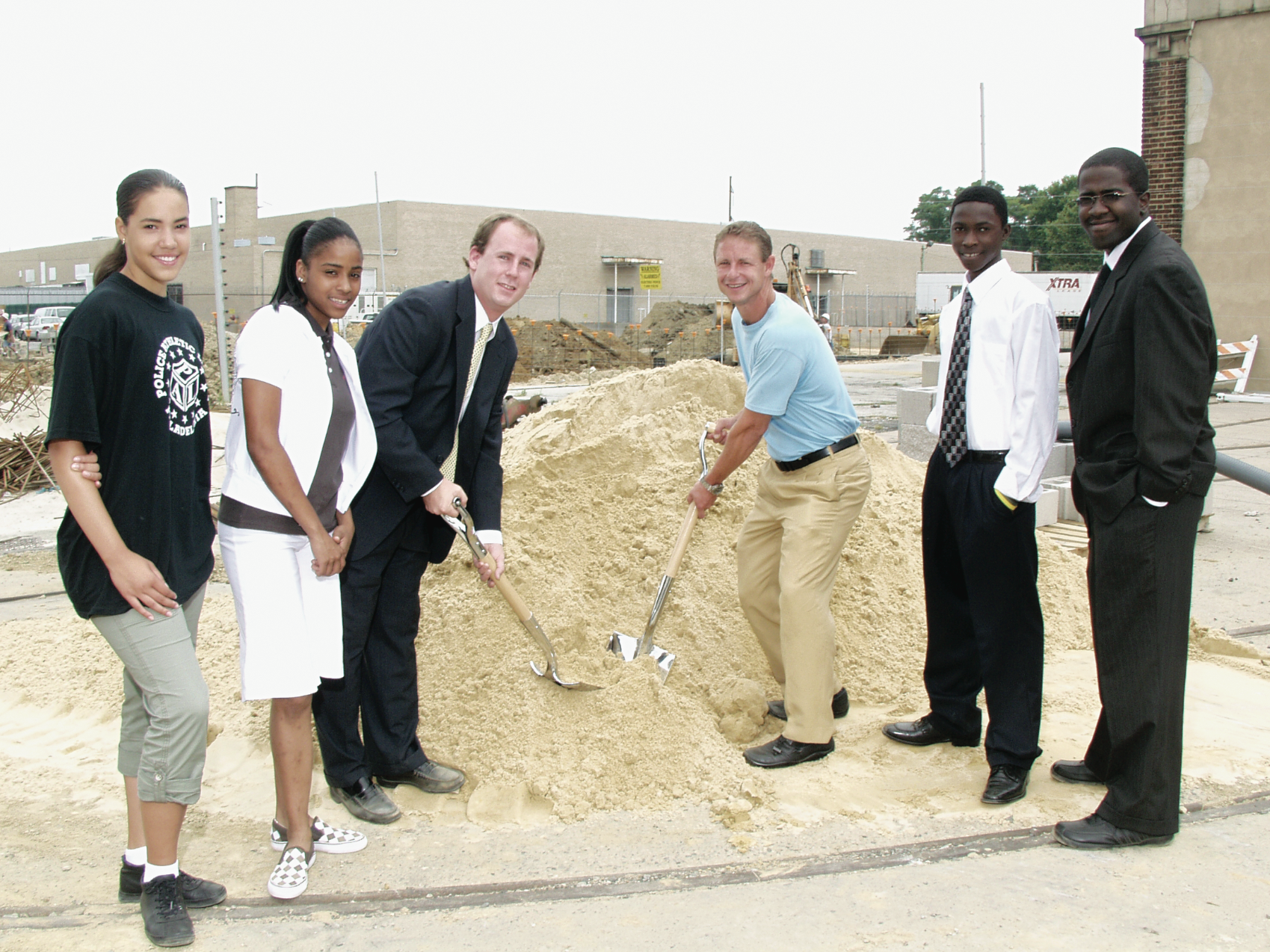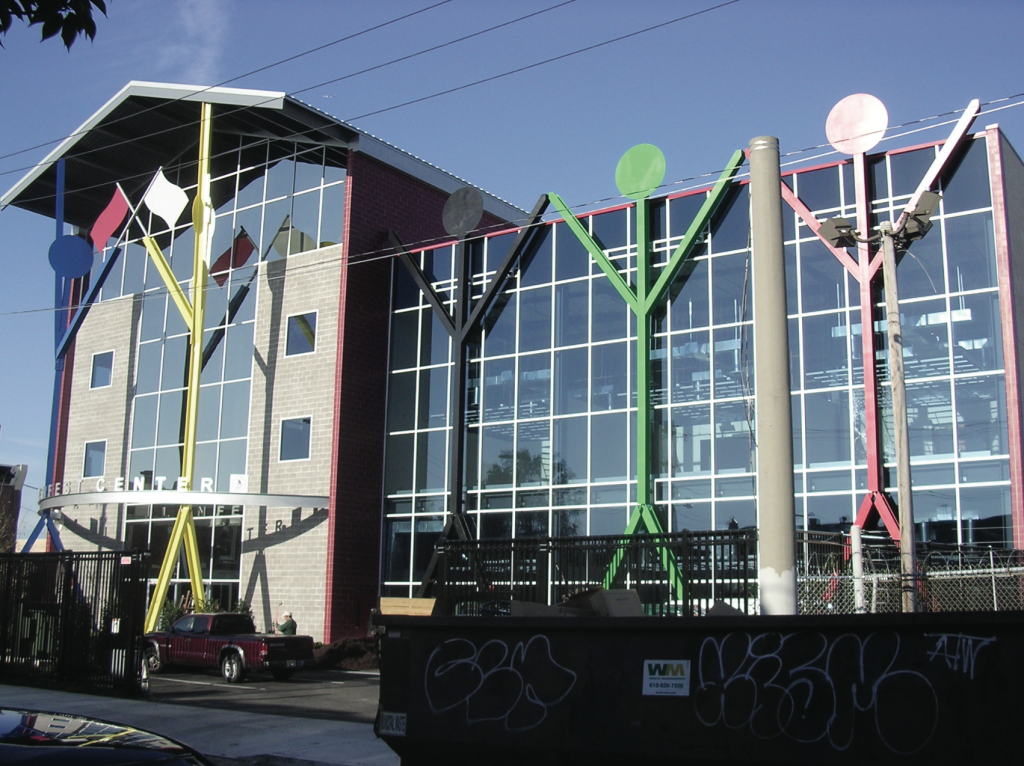
By Trevor McGuinness
First, there was the Badger & Rosen SquashBusters facility at Northeastern University—a 29,000 square foot athletic center with eight squash courts, a state-of-the-art fitness center and classroom space that visionary Greg Zaff promoted and developed. A few years later, the Stephen L. Green StreetSquash Community Center began construction in Harlem—an 18,700 square foot facility also with eight courts, classrooms and administrative offices that Executive Director George Polsky reports will be completed in the Spring 2008.
And on October 20th, the Lenfest Center will officially open its doors to the Philadelphia community as the third dedicated urban squash center in the United States. Situated in an economically depressed North Philadelphia neighborhood known as Hunting Park, the $10 million Lenfest Center is a dazzling and imposing recreation center that is certain to invigorate the community. A grand celebration is planned. Pennsylvania’s Governor and Philadelphia’s Mayor are both scheduled to attend, as are world squash champions Jon Power and John White, not to mention the Philadelphia Phillies’ and Philadelphia Eagles’ mascots! The event will help kick off the 50,000 square foot edifice which features a full gymnasium, fitness center, game room, art room, weight room, dance studio, computer labs and reference library on the first floor (operated by the Philadelphia Police Athletic League), and a second floor that is even more dramatic and impressive with soaring ceilings and open floor plans accenting eight international glass-back singles squash courts, two educational learning centers, a study lounge, locker area, common areas, meeting rooms and staff offices for the SquashSmarts after school youth program. In addition, the open roof space was designed to accommodate an expanded outdoor track while the planners also set aside 6,000 square feet of empty space on the second floor for future use. The facility, known as the Lenfest Center, will allow the SquashSmarts program to spread its wings and grow from its current capacity of 24 full-time students to over 116 students, with an additional 1,000 children participating in ancillary part-time, weekend and summer programs.

The road to this extraordinary accomplishment was paved by a group of Philadelphia squash enthusiasts who closely orchestrated the growth of SquashSmarts shortly after the first students were recruited in the fall of 2001. Impressed with Greg Zaff’s success with his Boston-based SquashBusters program, the founders, who included current Board President Lisa Stokes, past President Dr. Matt Stern, Treasurer Andy Nehrbas and Advisory board member Pam Ende, all helped to strategically guide the direction and expansion of the program.
The founders determined that their first task was to expand the Board of Directors with prominent leaders from the Philadelphia squash community. The group they recruited would come to include Peter Prinsen, general counsel for The Graham Company, squash legend and local lawyer Tom Harrity, real estate developer Andre Stephano, Drexel Professor Kirk Heilbrun, Philadelphia SRA President Molly Pierce, Dan Goroff from the Philadelphia Phillies and venture businessman and community philanthropist H. Chase Lenfest, among others. Each quickly became passionate supporters volunteering time on the courts with the kids, tutoring in the classroom and donating funds to support the programming.
The group’s next short-term goal was to employ a well-known and respected Executive Director to work with Julie Williams. Williams had served as ED for two successful years but chose to move into a new role as Academic Director in order to allow more time with her family. Stephen Gregg’s name was on the top of everyone’s list. Gregg was synonymous with junior squash, especially in the Philadelphia squash community where the United States Squash Racquets Association was then based. As the first Director of Junior Development for the USSRA (now known as US Squash), Gregg single-handedly expanded US junior squash participation by over three-hundred percent through new programs and initiatives that he conceived and promoted. In 1997, 27 boys and 22 girls were ranked in the Under-19 age group, as reported in the official USSRA Yearbook; ten years later, that number exploded with hundreds of players listed in all age categories and skill levels. After a brief courtship with the SquashSmarts Board of Directors, Gregg accepted the position as Executive Director and enthusiastically embraced the opportunity to take a fledgling youth organization to a new level, with only the beginnings of a dream that that “new level” would include the opening of a multi-million dollar youth center with dual programming locations.
Ostensibly, one of the organization’s long-term goals had been to build a dedicated squash and education facility. The program began at Drexel University in 2001 using six narrow courts in the Daskalakis Athletic Center. Prior to SquashSmarts’ existence, two courts were taken for storage and a ping-pong table sat in another squash court. Some in the Drexel community favored converting the courts to other uses. Plans for a climbing wall were even on the drawing board until Drexel Athletic Director Eric Zilmer invited the SquashSmarts players to use the courts. “Eric welcomed us with open arms,” recalls Williams. “He helped us return the squash courts to their intended purposes and then gave SquashSmarts a chance to convert one of the courts into a multi-purpose education center/office space for our kids.” The remaining five courts have all become squash courts once again and have been used each day to train the program’s seven classes of middle school and high school students.
Drexel students and faculty soon adopted SquashSmarts as their own, volunteering as tutors, assisting with community service projects and occasionally even jumping on the squash court. Many in the Drexel community began discovering this new sport and foot traffic to the courts increased exponentially like Jim Mitchell, head of the civil and architectural engineering program. Squash became the new “in” sport on campus. In short order, club sport status was conferred, evening and weekend clinics were offered and quickly filled and intramural leagues were formed. SquashSmarts’ sole tenancy of the squash courts soon ended as it competed with Drexel students and professors for court hours and usage. Consequently, the initial idea of expanding the program inside the walls of Drexel, as originally envisioned by the strategic plan, was stifled by the surge in popularity of the sport and the school’s need to avoid limiting court access to students and staff.
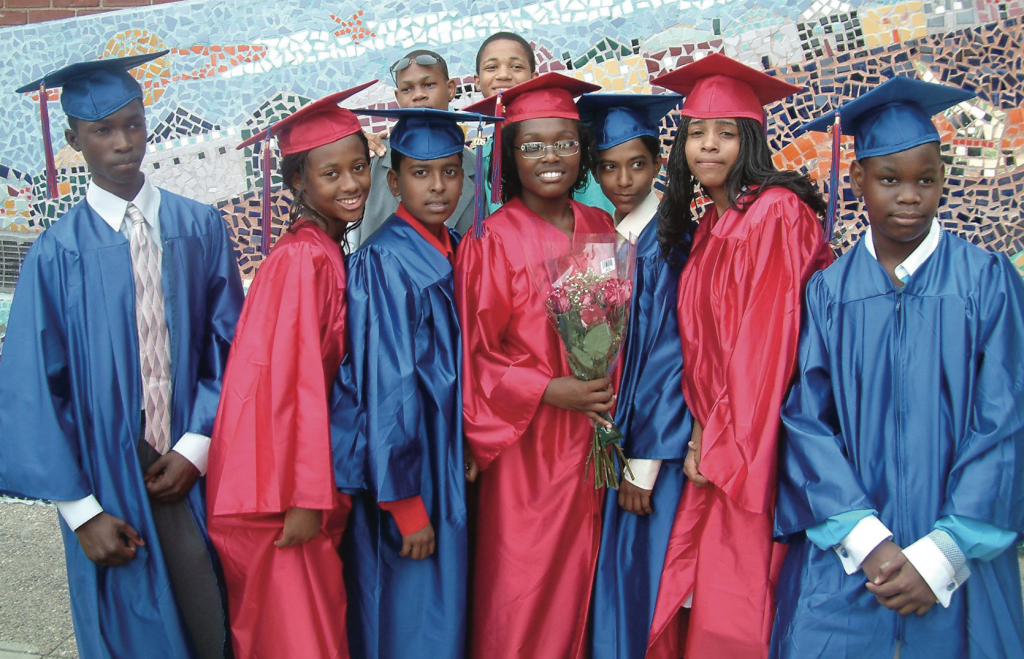
At the same time, SquashSmarts’ roster grew and their players’ skills improved. Tempest Bowden was among those who thrived most on the court. Tempest, along with her sister Quinetta, started SquashSmarts as middle school beginners. Tempest worked diligently on her game, playing in local tournaments, earning spots at the Cynwyd, Dartmouth and Princeton Squash Camps and becoming SquashSmarts’ top female squash player. She has been ranked as high as No. 6 in Philadelphia and No. 26 nationally. She has earned an invitation to the U.S. Junior Closed Championships (Gold Level), has captured three consecutive national singles at NUSEA’s National Urban Individuals Squash Championships and was featured in CNN Sports Illustrated One Line—all while training on narrow courts.
For the past six years, Tempest and her teammates have been shuffled to local clubs and to the University of Pennsylvania on weekends to practice and compete on wide courts, but they still spend the majority of their time on the smaller courts. As Gregg grew into his new position, he realized better facilities were a top priority—and not just for the squash players. “Tempest is a wonderful success story, but I can point to every one of our students and chronicle their growth. These are good kids, but when five-out-of-ten of their peers are dropping out of school in 9th grade…and when their middle schools do not offer any after school sports, it’s clear these kids need more than squash. They deserve a team, they deserve structure and they deserve opportunities.”
Chase Lenfest was one of the first board members to perceive the acute need for providing the opportunities that SquashSmarts delivers. An avid squash player from his days at Yale, and an accomplished entrepreneur, Lenfest is as comfortable on the courts hitting with the kids as he is sitting around the boardroom table—perhaps more so. Dave Talbott, his college coach, remains a close friend, and sat by his side when the Police Athletic League chose Chase as “PAL’s 2006 Man of the Year.” “Chase’s commitment to the SquashSmarts mission is heartfelt, sincere and second to none,” notes Talbott who himself conceived the SquashHaven program in New Haven. Talbott was one of the first to learn of Lenfest’s plans to build a dedicated facility and knew that his good friend would succeed.
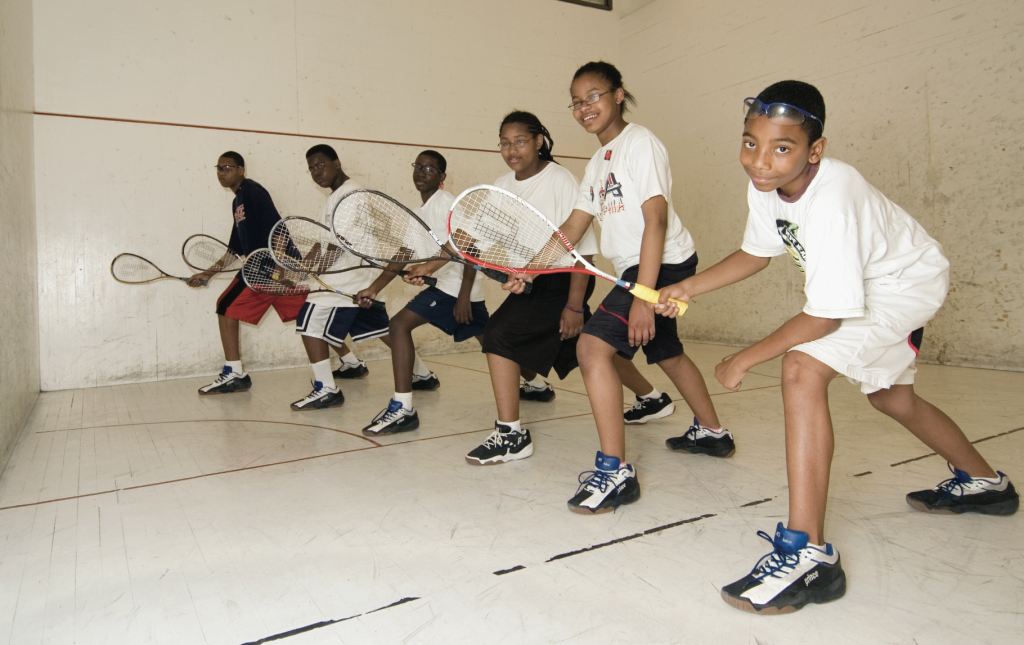
Lenfest presented his vision at one of the first Board of Director’s meetings Gregg chaired by unveiling plans for a massive and spectacular community center—one that was unique for Philadelphia or any major metropolitan center. Lenfest proposed to build the center in an underserved neighborhood where it could directly benefit a local population of children who would not need to travel any great distance for youth activities services.
The SquashSmarts Board understood the difficulties in moving ahead with this type of a project but embraced Lenfest’s objectives and vision. All appreciated that projects of this magnitude typically take years if not decades to complete as the maze of land purchase, zoning approvals, impact studies, environmental approvals and building delays often stall construction projects. Fortunately, Lenfest was eager to move this project forward and the Board was committed to reach even more needy children and maximize the experience of the program’s veterans, which they knew could only happen with a dedicated facility.
Both Lenfest and the board moved forward, with Lenfest coordinating the construction of the building while the Board retained consultants to develop a business plan, employed a Director of Development, and began a major fund-raising campaign. The end result? An extraordinary facility that is the vanguard of the urban squash movement spreading across the United States.
Over the past year, Gregg and his staff have worked tirelessly in planning the transition to the new facility. The challenges are daunting: No other urban squash and education program offers full-time programming across two locations serving two distinct communities. SquashSmarts will serve West Philadelphia’s Mantua neighborhood and North Philadelphia’s Hunting Park. No program currently operates out of a privately owned and operated youth center, nor do the other programs have a second high-profile and well-respected after school co-tenant like the Police Athletic League. The opportunity is incredible, but there are no road maps to follow. Consequently, Gregg and his staff have been consumed with overhauling the programming, interviewing new partner schools, liaising with community leaders in the neighborhoods, hiring additional staff and making certain the flow of funds did not disappear. While Squash Director Jake Greenbaum handles the expansion of the health, fitness and squash aspects of the program, including relocation of all their high school programs, Academic Director Tariem Burroughs plans growth and development of the extended education program, partnering with new schools, recruiting new students and forming relationships with new families in North Philadelphia.
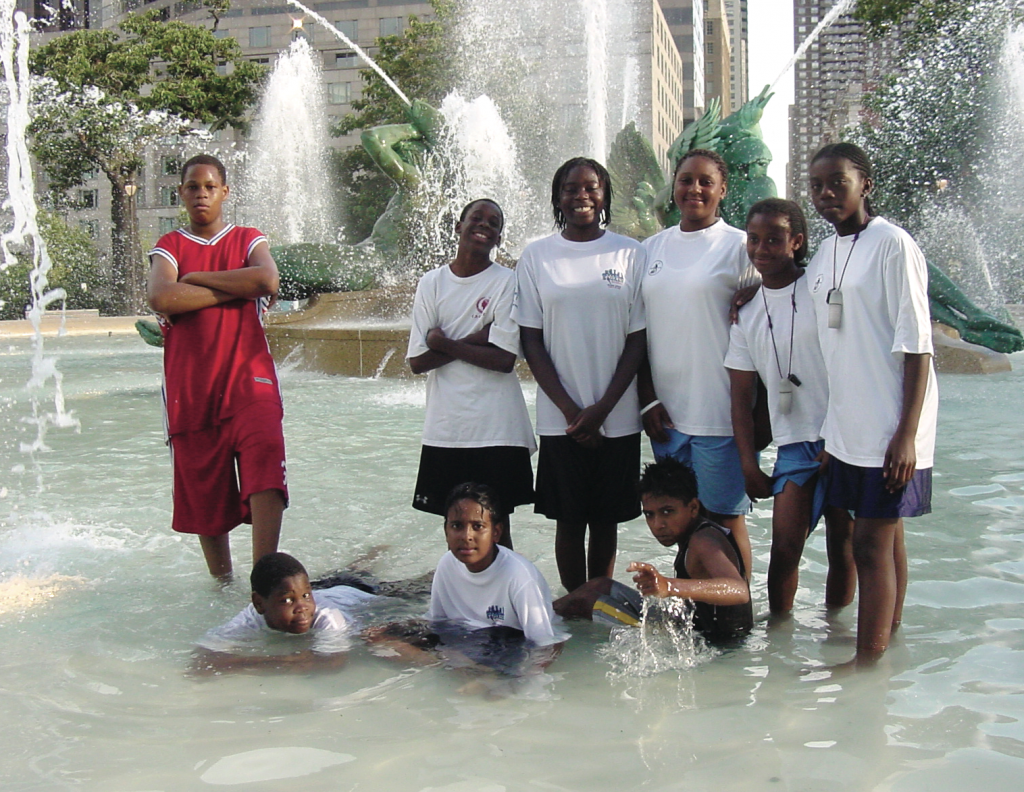
Fortunately, not all has required a major change. SquashSmarts’ current middle school program in West Philadelphia will continue to meet in the classroom built at Drexel where the players still use the five narrow courts, soon to be augmented by two international courts that Drexel plans to build as part of its field house renovations. In addition, the model SquashSmarts developed works. In fact, it is one of the reasons Gregg was a proponent and founding member, along with SquashBusters, StreetSquash and CitySquash, of the National Urban Squash Education Association (NUSEA). All of this ultimately lends credit, resources, expertise, know-how and to the SquashSmarts expansion plan.
Zaff, who now chairs NUSEA, tackled similar issues when SquashBusters built its facility in Boston and was invited to assess the SquashSmarts program and finances. While he is sanguine about the prospects for the continued success of the SquashSmarts program, he offered some cautionary advice to avoid a rude awakening after the honeymoon is over: “Once the doors have opened, and the excitement of the moment has faded, the business of raising money remains. Funding is an on-going and top priority issue as programs like SquashSmarts require a low student-staff ratio, and that comes with a price.” The board appreciated the importance of maintaining positive cash flow, and the same consultants who drafted the business plan also prepared a feasibility study that set funding targets that must be met to keep the operation financially secure.
Gregg expects SquashSmarts will not be settled into their new home for several months but their plans are ambitious. “We’ve just secured over a half million dollars in private funds to help operate and expand the facility, and we’re very proud to have recently been awarded the bid from NUSEA to host the 2008 National Urban Team Championships next spring.” For the energetic SquashSmarts team, there will be no rest, but there will certainly be great comfort in knowing that its own “Field of Dreams” has been built and that the student-athletes will now come to the Lenfest Center to reap its many benefits. “There is only one question that drives every decision we make at SquashSmarts,” says Gregg, “and that is ‘what is best for the kids?’”
Trevor McGuinness is a long time volunteer with SquashSmarts and served as its interim Director of Community Service in 2006-2007.


